WOW
SLOW TRAVEL
52 CITIES
1 WEEK
EACH CITY
52 WEEKS
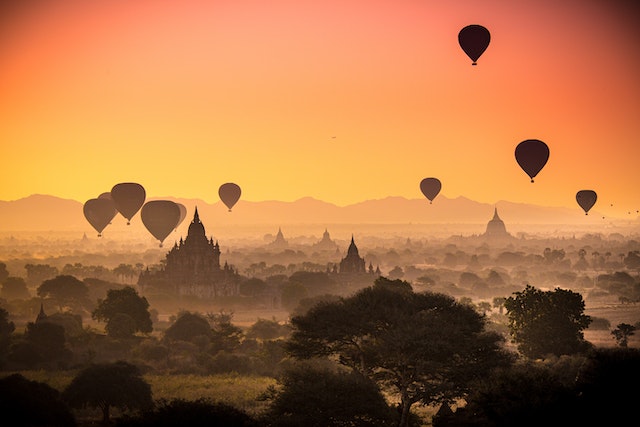
Myanmar
Myanmar, formerly known as Burma, is a Southeast Asian country with a rich cultural heritage and a complex history. It is known for its diverse landscapes, ancient temples, and unique cultural traditions. However, Myanmar has also faced political challenges and conflicts in recent years. Here’s an overview of Myanmar:
Geography: Myanmar is the largest country in mainland Southeast Asia, bordered by India and Bangladesh to the west, China to the north and northeast, Laos to the east and southeast, and Thailand to the south and southwest. It has a diverse geography, including mountains, plains, and coastal areas.
Cultural Heritage: Myanmar has a long history with deep cultural roots. The country is home to thousands of temples and pagodas, with the ancient city of Bagan being a prominent example. Shwedagon Pagoda in Yangon is one of the most sacred Buddhist sites in the country.
Buddhism: Buddhism plays a central role in Myanmar’s culture and society. The majority of the population practices Theravada Buddhism, and monasteries are an integral part of daily life.
Ethnic Diversity: Myanmar is ethnically diverse, with numerous ethnic groups, including the Bamar (Burman), Shan, Karen, Rakhine, and many others. The country’s ethnic diversity has also been a source of conflict.
Political History: Myanmar has experienced periods of military rule and political turmoil. Aung San Suu Kyi, a prominent political figure and Nobel laureate, played a significant role in the country’s struggle for democracy.
Recent Challenges: Myanmar has faced significant challenges in recent years, including conflicts in ethnic regions, human rights issues, and the Rohingya crisis, which led to the displacement of hundreds of thousands of Rohingya Muslims.
Tourism: Myanmar’s natural beauty and cultural heritage have made it a popular tourist destination. Visitors are drawn to places like Bagan, Mandalay, Inle Lake, and Yangon. However, travel to certain areas may be restricted due to ongoing conflicts.
Economy: Myanmar’s economy is diverse, with agriculture, manufacturing, and services sectors. Natural resources such as oil, gas, and minerals are also significant contributors to the economy.
Language: Burmese is the official language, but there are numerous ethnic languages spoken throughout the country.
Visa Requirements: Before traveling to Myanmar or considering an extended stay, it’s crucial to check the visa requirements and regulations, which can change periodically. Visas may be required for most tourists.
Safety and Security: Myanmar has experienced periods of political and social unrest. It’s important to stay informed about the current situation and any travel advisories issued by your government.
Myanmar offers a unique cultural experience and beautiful landscapes, but it’s essential to be aware of the current political and social conditions when planning a visit or an extended stay. Additionally, consulting with local authorities and international organizations can provide valuable guidance for those considering Myanmar as a destination
Myanmar is not a common destination for American retirees, and there are several reasons for this. The country has faced political and social challenges in recent years, including conflicts in ethnic regions and human rights concerns. These challenges can affect the overall quality of life and safety for retirees.
Moreover, Myanmar may not offer the same level of infrastructure, healthcare, and amenities that retirees from the United States typically seek. The healthcare system, in particular, may not meet international standards in some areas.
If you are still interested in retiring in Myanmar, it’s essential to conduct thorough research, consult with experts, and consider the following cities:
Yangon (Rangoon): As Myanmar’s largest city and economic hub, Yangon has the most developed infrastructure in the country. It offers some amenities that retirees might find attractive, such as international restaurants, shopping malls, and historical sites like Shwedagon Pagoda. However, it’s essential to be aware of the political situation and potential challenges.
Mandalay: Mandalay is another major city in Myanmar and offers a slower pace of life compared to Yangon. It has historical and cultural attractions, including the Mandalay Palace and the U Bein Bridge. Keep in mind that healthcare services may not be as advanced as in some other countries.
Inle Lake: Inle Lake is a scenic destination known for its serene beauty. It’s a popular spot for tourists and retirees who seek a tranquil environment. However, the level of infrastructure and healthcare facilities may be limited compared to larger cities.
Bagan: Bagan is famous for its ancient temples and pagodas, and it provides a unique cultural experience. While it’s not a major city, it’s an option for retirees who are passionate about history and archaeology. Access to modern amenities may be limited in Bagan.
Naypyidaw: Naypyidaw is the capital city of Myanmar, but it’s not a common choice for retirees due to its relatively recent development and the presence of government institutions. The city is known for its wide boulevards and government buildings.
Before considering retirement in Myanmar, it’s crucial to:
Research the current political and social situation in the country.
Consult with international experts, legal advisors, and expatriates living in Myanmar.
Ensure you understand visa requirements and regulations for retirees.
Consider the availability and quality of healthcare facilities.
Evaluate the cost of living and budget accordingly.
Given the complexities and challenges in Myanmar, many American retirees choose other countries in Southeast Asia, such as Thailand, Malaysia, or Vietnam, where they can find more established expatriate communities, better healthcare options, and a more predictable political environment
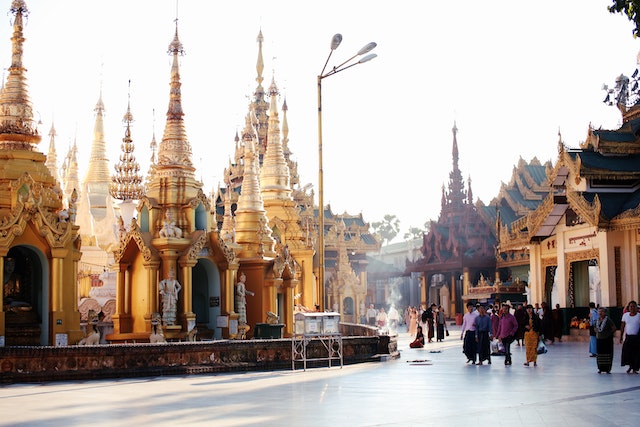
Yangon
Yangon, formerly known as Rangoon, is the largest city and the former capital of Myanmar. It’s a city with a rich cultural heritage, historical significance, and a unique blend of old-world charm and modern development. While Yangon has its attractions, it’s essential to be aware of the country’s current political and social situation when considering it as a retirement destination. Here’s an overview of Yangon:
Cultural Richness: Yangon is a melting pot of cultures, with influences from the Bamar (Burman) majority, as well as Indian, Chinese, and indigenous communities. The city’s cultural diversity is reflected in its festivals, traditions, and cuisine.
Shwedagon Pagoda: The Shwedagon Pagoda is one of the most sacred and iconic Buddhist sites in Myanmar. It’s a stunning gold-plated pagoda that dominates the city’s skyline and is a popular pilgrimage site.
Colonial Architecture: Yangon boasts a wealth of colonial-era architecture, including old government buildings, churches, and historical landmarks. The downtown area is known for its well-preserved colonial structures.
Markets and Shopping: The city has bustling markets and street stalls where you can shop for traditional handicrafts, textiles, gemstones, and antiques. The Bogyoke Aung San Market is a popular destination for shopping.
Street Food: Yangon offers a variety of street food, showcasing Burmese, Indian, and Chinese culinary influences. You can enjoy dishes like mohinga (a fish noodle soup), samosas, and tea leaf salad from street vendors.
Yangon River: The Yangon River flows through the city and provides opportunities for river cruises and boat tours. These tours offer a unique perspective of Yangon’s waterfront and the local way of life.
Cafes and Restaurants: The city has a growing number of cafes, restaurants, and international dining options. You can find everything from Burmese teahouses to Western-style eateries.
Transportation: Yangon has a relatively well-developed transportation system, including buses and taxis. The city’s traffic can be congested, but it’s possible to get around using public transport.
Healthcare: While Yangon has some modern healthcare facilities, it’s essential to assess your healthcare needs and options before considering retirement. Medical services may not meet Western standards in all areas.
Accommodation: The city offers a range of accommodation options, from luxury hotels to guesthouses and serviced apartments. The cost of living can vary depending on your lifestyle choices.
Retirement: Yangon may not be the first choice for retirees due to the country’s political and social challenges. It’s crucial to conduct thorough research and consult with experts before making any retirement plans in Myanmar.
When considering retirement in Yangon or an extended stay, it’s crucial to understand visa requirements and regulations for retirees in Myanmar, such as the specific visa options available. Additionally, staying informed about the current political and social situation in Myanmar is essential, as it can impact your safety and quality of life. Consulting with local authorities and international organizations can provide valuable guidance for planning your retirement in Yangon or elsewhere in Southeast Asia
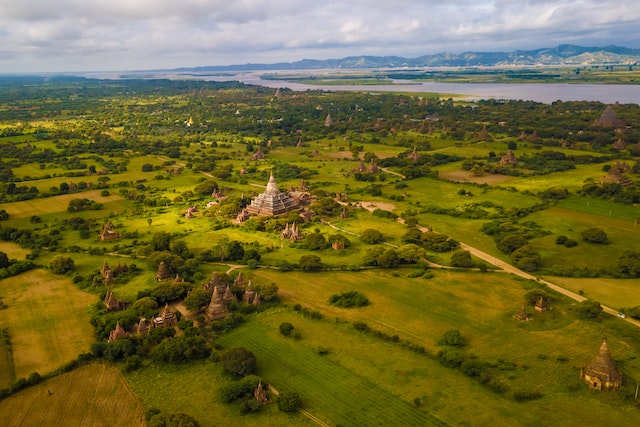
Mandalay
Mandalay is the second-largest city in Myanmar and holds significant cultural and historical importance. Known for its rich heritage, ancient temples, and traditional Burmese arts, Mandalay offers a unique blend of old-world charm and modern developments. However, it’s crucial to be aware of the country’s political and social situation when considering it as a retirement destination. Here’s an overview of Mandalay:
Cultural Heritage: Mandalay is often referred to as the cultural capital of Myanmar. It is home to many of the country’s traditional arts and crafts, including puppetry, woodworking, and gold leaf production. The city is known for its historical and cultural sites.
Mandalay Palace: The Mandalay Palace is a prominent historical landmark and the last royal palace of the Burmese monarchy. It’s an impressive structure surrounded by a moat, and visitors can explore its well-preserved interiors and beautiful gardens.
Temples and Pagodas: Mandalay and its surrounding areas are home to several important religious sites, including the Mahamuni Buddha Temple, Kuthodaw Pagoda (home to the “world’s largest book”), and Shwenandaw Monastery (a teakwood monastery).
Amarapura: Amarapura, a former capital of Myanmar, is located just south of Mandalay. It’s known for its U Bein Bridge, which is the longest teakwood bridge in the world. The bridge offers picturesque sunset views over Taungthaman Lake.
Cuisine: Mandalay offers a variety of traditional Burmese dishes and street food. You can savor local delicacies like Mandalay mutton curry, mont lin mayar (a type of pancake), and Mandalay-style noodles.
Art and Craft Workshops: The city is a hub for traditional Burmese arts and crafts. Visitors can explore workshops where artisans create intricate wood carvings, tapestries, and lacquerware.
Transportation: Mandalay is well-connected by road and air, with Mandalay International Airport serving as a gateway for both domestic and international flights. The city has public buses and taxis for local transportation.
Accommodation: Mandalay offers various accommodation options, from boutique hotels to guesthouses and budget-friendly lodgings. Prices can vary depending on the level of comfort and amenities.
Healthcare: While Mandalay has some medical facilities, it’s essential to assess your healthcare needs and options before considering retirement. Medical services may not meet Western standards in all areas.
Retirement: Mandalay, like other parts of Myanmar, may not be the first choice for retirees due to the country’s political and social challenges. It’s essential to conduct thorough research and consult with experts before making any retirement plans in Myanmar.
When considering retirement in Mandalay or an extended stay, it’s crucial to understand visa requirements and regulations for retirees in Myanmar, such as the specific visa options available. Additionally, staying informed about the current political and social situation in Myanmar is essential, as it can impact your safety and quality of life. Consulting with local authorities and international organizations can provide valuable guidance for planning your retirement in Mandalay or elsewhere in Southeast Asia
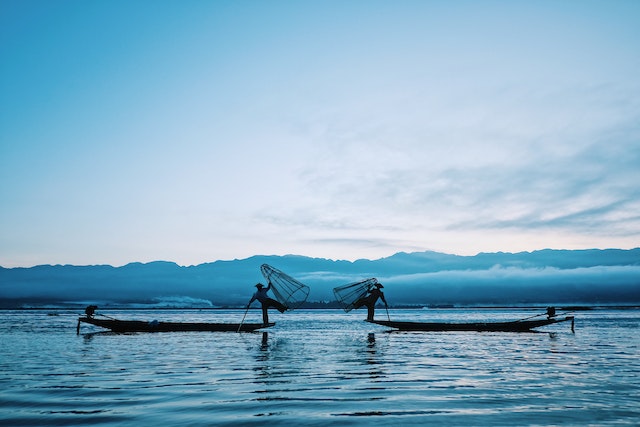
Inle Lake
Inle Lake is one of the most picturesque and unique destinations in Myanmar. Located in the Shan State of eastern Myanmar, it is a freshwater lake known for its serene beauty, traditional floating villages, and distinct way of life. While it may not be a typical retirement destination due to its remote location, Inle Lake offers a serene and immersive experience for those seeking a peaceful and culturally rich environment. Here’s an overview of Inle Lake:
Scenic Beauty: Inle Lake is surrounded by lush green hills and mountains, creating a breathtaking natural backdrop. The lake itself is known for its calm waters, which reflect the surrounding landscapes.
Traditional Fishing: One of the iconic features of Inle Lake is the unique fishing technique of the local Intha fishermen, who use one leg to paddle their wooden canoes while balancing on the other leg and using a conical net to catch fish.
Floating Villages: The lake is dotted with traditional stilted villages where Intha people live. These villages are built on the lake and have houses, markets, and monasteries, all constructed on wooden stilts.
Floating Gardens: Inle Lake is famous for its floating gardens. Local farmers cultivate crops like tomatoes and cucumbers on floating beds of water hyacinth and mud. It’s an ingenious agricultural practice.
Cultural Experiences: Visitors to Inle Lake can immerse themselves in local culture by visiting monasteries, attending traditional weaving workshops, and experiencing the local way of life.
Boat Tours: Exploring the lake by boat is a popular activity. You can hire longtail boats or take guided tours to visit various attractions, including temples, markets, and workshops.
Inle Lake Wildlife Sanctuary: The lake and its surroundings are home to diverse bird species and wildlife. The Inle Lake Wildlife Sanctuary is a protected area where you can spot various avian species.
Accommodation: Inle Lake offers a range of accommodation options, from boutique hotels and resorts to guesthouses and homestays. Staying in a lakeside resort allows you to enjoy the serene environment.
Transportation: Inle Lake is accessible by road from cities like Heho and Taunggyi. Heho Airport is the nearest airport, and from there, it’s a short drive to the lake.
Retirement: While Inle Lake may not be a typical retirement destination, some retirees seeking a unique and tranquil environment have chosen to settle in nearby areas, such as Nyaungshwe. It’s essential to consider factors like healthcare and accessibility when contemplating retirement in this region.
Visa Requirements: As with other parts of Myanmar, it’s crucial to understand visa requirements and regulations for retirees if you plan to stay in Inle Lake for an extended period.
Inle Lake offers a serene and culturally rich environment that can be appealing to those who seek a peaceful and immersive experience in Myanmar. While it may not have the same level of amenities and infrastructure as larger cities, it provides a unique opportunity to connect with local culture and nature
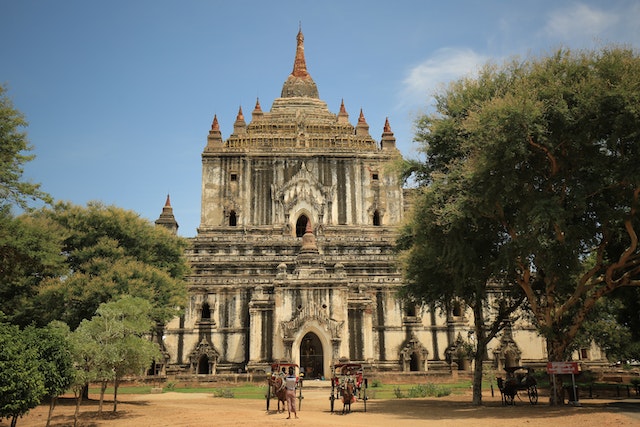
Bagan
Bagan is an ancient city located in the Mandalay Region of Myanmar (Burma). It is renowned for its vast archaeological site, which contains thousands of well-preserved temples, stupas, and pagodas. Bagan is a significant historical and cultural destination, but it’s important to be aware of the country’s political and social situation when considering it as a retirement destination. Here’s an overview of Bagan:
Archaeological Site: Bagan is home to one of the most extensive and impressive collections of Buddhist temples and monuments in the world. The Bagan Archaeological Zone covers a vast area and includes over 2,000 temples and pagodas dating back to the 11th to 13th centuries.
Temples and Pagodas: The temples and pagodas in Bagan are known for their unique architectural styles and intricate designs. Popular sites include Shwezigon Pagoda, Ananda Temple, Thatbyinnyu Temple, and Sulamani Temple.
Sunrise and Sunset: Bagan is famous for its stunning sunrise and sunset views over the temples. Climbing to the top of a pagoda or taking a hot air balloon ride provides breathtaking panoramic views.
Cultural and Historical Significance: Bagan was the capital of the Pagan Kingdom, and its historical and cultural importance is reflected in the many temples and inscriptions found throughout the area.
Local Life: Bagan is not just a historical site; it’s also home to local communities. You can explore nearby villages and interact with local residents to gain insight into their way of life.
Traditional Crafts: Bagan is known for its traditional crafts, including lacquerware, woodwork, and handwoven textiles. You can visit workshops and galleries to witness artisans at work.
Transportation: The main transportation options in Bagan are horse carts, bicycles, and e-bikes. These eco-friendly modes of transport allow you to explore the temple-strewn plains at a leisurely pace.
Accommodation: Bagan offers a range of accommodation options, from luxury hotels and resorts to mid-range and budget-friendly guesthouses. Some hotels are even housed within historic temples.
Retirement: Bagan may not be a typical retirement destination due to the country’s political and social challenges. It’s crucial to conduct thorough research and consult with experts before making any retirement plans in Myanmar.
Visa Requirements: As with other parts of Myanmar, it’s essential to understand visa requirements and regulations for retirees if you plan to stay in Bagan for an extended period.
While Bagan is a mesmerizing destination known for its historical and architectural marvels, it’s vital to consider the country’s current political and social situation when contemplating retirement or an extended stay in Myanmar. Consulting with local authorities and international organizations can provide valuable guidance for planning your visit to Bagan or other parts of Southeast Asia
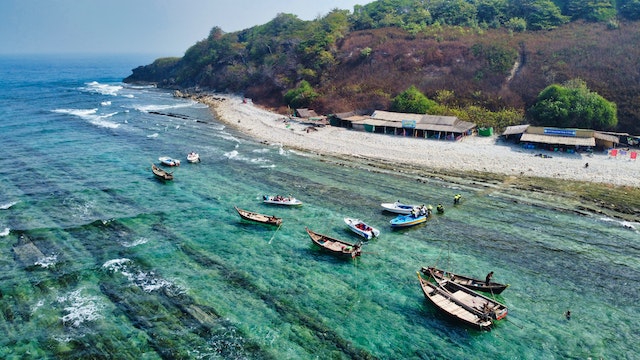
Naypyidaw
Naypyidaw is the capital city of Myanmar, also known as Burma. It is a relatively new capital city, having officially replaced Yangon (Rangoon) as the capital in 2005. The decision to move the capital to Naypyidaw was made by the military government at the time, and the city was constructed from scratch in a remote area of central Myanmar. Here’s an overview of Naypyidaw:
Purpose and Design: Naypyidaw was designed to be a purpose-built administrative capital. It was constructed with wide boulevards, government buildings, and infrastructure to house the country’s government institutions and bureaucracy.
Size: Naypyidaw is known for its vast size. It covers a large area, and some of its districts are still sparsely populated. The city’s vastness has led to the need for private transportation, as many areas are not easily accessible on foot.
Government Buildings: The city is home to government ministries, offices, and the residences of government officials. The Parliament Building, which houses both houses of Myanmar’s legislature, is one of the city’s prominent landmarks.
Hotels and Accommodation: Naypyidaw has several hotels, including luxury options, to accommodate government officials, business travelers, and tourists. However, it may not have the same tourism infrastructure as other cities in Myanmar.
Transportation: Naypyidaw is accessible by road and air. The city has an international airport, Naypyidaw International Airport, which connects it to other major cities in Myanmar and some international destinations.
Limited Tourist Attractions: While Naypyidaw serves as the administrative capital, it has limited tourist attractions compared to other cities in Myanmar. Visitors typically come for official or business purposes rather than tourism.
Local Life: Naypyidaw’s local population is relatively small compared to its size. Some areas are still being developed, and the city’s character is quite different from Myanmar’s more established cities.
Retirement: Naypyidaw is not typically considered a retirement destination for foreigners. While it may offer a unique experience as Myanmar’s capital, it lacks the extensive amenities, cultural attractions, and expatriate communities found in other cities in the country.
Visa Requirements: As with other parts of Myanmar, it’s essential to understand visa requirements and regulations if you plan to stay in Naypyidaw for an extended period.
